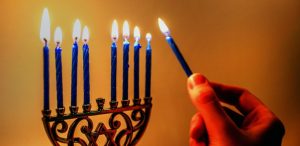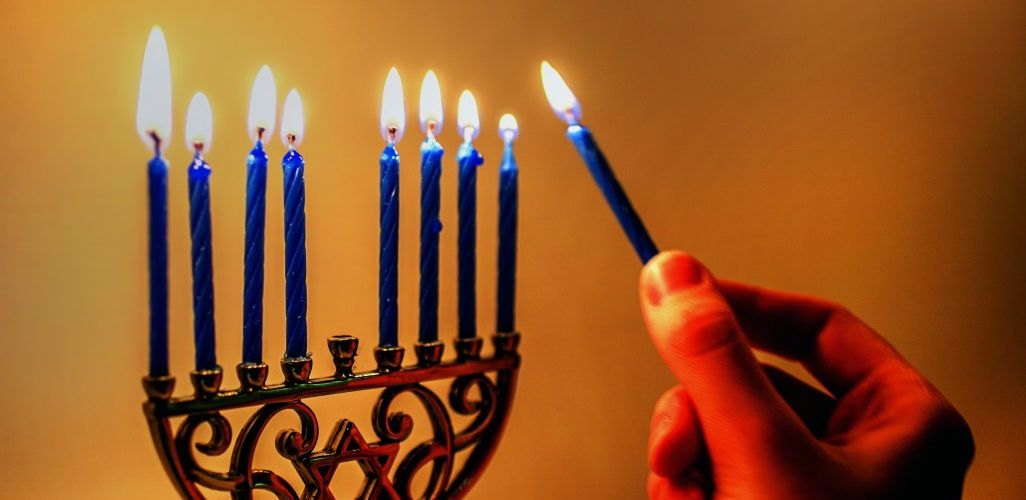
Chanuka From The Torah
The Halachos Gedolos, an ancient work describing the 613 mitzvos, counts Ner Chanuka as one of the 613. Now, Ner Chanuka is a decree of the Rabonon. However, since the Torah obligates us to listen to the Rabbis of the Sanhedrin, the status of Rabbinic laws are elevated to that of Torah law.
The Rambam, in Sefer Hamitzvos, disagrees. Mitzvos from the Rabonon should not be included in the list of 613. According to the Halachos Gedolos, it would follow that all mitzvos from the Rabonon should be in the list. You would not have 613, but thousands! (Sefer Hamitzvos, Shoresh 1) (1)
The view of Rambam, is, however, problematic. The Rambam agrees with the assessment that Rabbinic decrees are binding by Torah Law. This being the case, why shouldn’t Ner Chanuka be included in the 613? Rather, we must conclude that mitzvos from the Rabonon are not elevated to the status of Torah law. (Hasagos HaRamban, Sefer Hamitzvos, Shoresh 1.) (2)
Rav Elchonon Wasserman shows that violating a Rabbinic law is definitely proscribed by the Torah, but the individual law is not a Torah ruling according to the Ramban. (Kuntres Divre Sofrim, simon 1)
The Basis of Pirsumei Nisa
The Chasom Sofer proves that the concept of pisumei nisa — publicizing the miracle, which forms the basis of Ner Chanuka and reading the Megila — is certainly a concept from the Torah. The particular details, however, were left up to the Rabbis to decree. (3)
The Reason for Hallel
There is a debate as to the purpose of the Hallel at Chanuka. (4) According to the Chasom Sofer, the Hallel is recited because of the miracles which occurred; it is similar to saying the Hallel at Pesach night. (5) However, according to the Brisker Rav, the Yomim Tovim (Chanuka included) require reciting the Hallel because of the uniqueness of the fixed day of celebration — the ‘kviyas Yom Tov’. (6)
___________________________________
1. Only mitzvos from Moshe’s words — verses in the Torah or oral traditions directly from Moshe — are included in taryag mitzvos.
2. The Ramban has many arguments to support this. See the commentaries to Sefer Hamitzvos who explain the view of the Rambam.
3. I.e., whether there should be lights for Chanuka, or a parchment for the reading of the Megila — these aspects were left up to the Rabonon to decide.
3. Chasom Sofer, Commentary to Shabbos 23a (and several other places — see Teshuvos YD 233). In Tractate Megila, the Talmud proves that we must do something to recognize the miracle (i.e., read the Megila), just as they said Hallel at Pesach night. This logic (Kol V’chomer) applies to other miracles, such as Chanuka.
4. Shitos B’halacha, Nashim B’neir Chanuka (Chelek 2 in old edition, Chelek 1 in new edition).
5. The Gemara clearly seems to imply this in Erchin 10a: “Why do we say Hallel at Chanuka? It’s neither a Mo’ed, nor is melacha prohibited… Chanuka is different because of the neis.” See further there, where Chanuka is compared to Pesach. The Turei Even proves that the reference is to Pesach night, where Hallel is said because we see ourselves as experiencing the miracles.
6. This is indicated in the Gemara in Shabbos 21b: “They established eight days of Yom Tov for thanks and Hallel.” (Shitos B’halacha, Ibid.) The Brisker Rav proves his point of view from Rishonim (Erchin, Ibid.)


